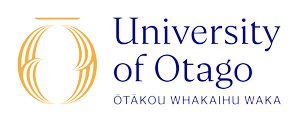Cost savings of the rural accelerated chest pain pathway
The rural accelerated chest pain pathway (RACPP) has been shown to safely reduce the number of transfers to hospital for patients who present with chest pain to rural general practice.
2022-12-22Rory Miller, Garry Nixon, Tim Stokes, Michelle Smith, John W. Pickering, Talis Liepins and Martin Than. Journal of Primary Health Care 2022 doi:10.1071/HC22117
Hot off the Press & available to all at https://www.publish.csiro.au/HC/HC22117
With a rural accelerated chest pain pathway developed and shown to be equivalent to accelerated diagnostic chest pain pathways in urban EDs for patients with low-risk cardiac events, the team has now surveyed patients to evaluate the potential cost savings to both individuals and the health system. Despite the low response rate, it is evident that savings can be made at many levels. This pathway will now be evaluated across Aotearoa NZ https://www.hrc.govt.nz/resources/research-repository/evaluating-bedside-high-sensitivity-troponin-within-rural-chest-pain
Abstract
Introduction
The rural accelerated chest pain pathway (RACPP) has been shown to safely reduce the number of transfers to hospital for patients who present with chest pain to rural general practice.
Aim
This study aimed to estimate the costs associated with assessing patients with low-risk chest pain using the RACPP in rural general practice compared with transporting such patients to a distant emergency department (ED).
Methods
This was a retrospective cost minimisation analysis. All patients with low-risk chest pain that were assessed in New Zealand (NZ) rural general practice using the RACPP between 1 June 2018 and 31 December 2019 were asked to participate. The costs incurred by patients were determined by an online survey. Patients were also asked to estimate the costs if they would have been transferred to ED. System costs were obtained from the relevant healthcare organisations. The main outcome measure was the total cost for patients who present with low-risk chest pain.
Results
In total, 15 patients (22.7% response rate) responded to the survey. Using the RACPP in general practice resulted in a median cost saving of NZ$1184 (95% CI: $1111 to $1468) compared with transferring the same patient to ED.
Discussion
Although limited by low enrolment, this study suggests that there are significant savings if the RACPP is used to assess patients with low-risk chest pain in rural NZ general practice.
